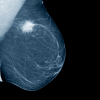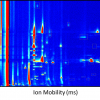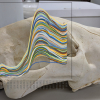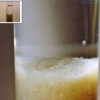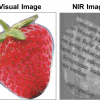A.N. Davies,a H.M. Heiseb and D.F. Ihrigc
aProfessor, SERC, University of Glamorgan, UK, Director, ALIS Ltd, and ALIS GmbH—Analytical Laboratory Informatics Solutions
bISAS—Institute for Analytical Sciences at Dortmund University of Technology, Bunsen-Kirchhoff-Str. 11, D-44139 Dortmund, Germany
cUniversity of Applied Sciences of South-Westphalia, Frauenstuhlweg 31, D-58644 Iserlohn, Germany
OK... I know... for the majority of the readers of Spectroscopy Europe a phrase which comes from Yorkshire probably makes a pretty poor title for an article. However, if in “Where There’s Muck There’s Brass” you simply translate Muck as Dirt or Waste and understand that Brass is a Yorkshire term for Money, then you might get a little closer to our subject, Spectroscopy in Anaerobic Bioreactor Monitoring and Control.
At the Sustainable Environmental Research Centre (SERC), which has carried out research in AD systems for more than 30 years,1 we have initiated a new knowledge transfer organisation to help, advise and promote Anaerobic Digester technology. Led by Dr Sandra Esteves the AD centre has the explicit aim of helping early adopters overcome some of the common hurdles they may encounter (www.walesadcentre.org.uk).
Current regulatory pressure is driving industry and government bodies to radically re-think how they handle municipal and industrial process waste. In many countries the restrictions on the use as well as remaining capacity of landfill have forced steps to the adoption of alternative technological solutions.
The widespread use of aerobic systems such as composting and conventional waste water treatment is inefficient with regards to energy use and related greenhouse gas emissions. A more efficient approach is to move to anaerobic digestion where the more compact systems can be used to exploit the process overall creating bioenergy in the form of methane and to a lesser extent hydrogen (see Figure 1).

Now I clearly recognise that this is an extremely simplistic view of the world and controlling the complexity is where our spectroscopy can play an interesting role.
The anaerobic process has a number of stages starting with the hydrolysis of the original feedstock material. An efficient typically two-stage, anaerobic digester carries out acidogenesis in the first stage and acetogenesis and methanogenesis in the second. This can be represented as the breaking down of high molecular mass long-chain systems such as carbohydrates to sugars, proteins to nucleic acids and the conversion of fats to fatty acids followed by subsequent conversion to acetic acid, carbon dioxide and hydrogen then finally to methane and carbon dioxide (see Figure 2).

Acetogenesis is strongly combined with methanogenesis as during the formation of acetic acid from alcohols and higher carboxylic acids acetogenetic bacteria produce hydrogen, which is a poison mephitic for itself but a nutrient for methanogenetic bacteria. For this reason they have to live in a symbiosis. For a typical reactor schematic see Figure 3.

Although very efficient in breaking down difficult waste feedstock the anaerobic processes themselves are non-linear and sensitive to imbalances. Overloading the reactor leads to a shift to higher acidity with the process shifting out of the “thermodynamic triangle” and becomes endothermic. This instability and loss of efficiency can, if not corrected in a timely manner, lead to damage to the bacterial colonies which may take significant time to correct.
Fortunately, there are clear chemical indicators that all is not well in our various stages. Increases in acidity and specifically in volatile fatty acid concentrations of acetic, propionic and butyric acids signal problems.
Some anaerobic digester monitoring has been carried out through infrequent conventional, off-line, laboratory-based chromatographic techniques such as gas chromatography or even high performance liquid chromatography. A major disadvantage of this approach specifically for high rate systems operating at very low retention times is that the speed at which instabilities appear in an anaerobic digester could mean that even if we have been lucky enough to have taken a sample as the reactor began to have problems, by the time the results came back from the laboratory serious damage to the functioning of the reactor may already have been inflicted. Chromatography is quite labour intensive and uses a lot of chemicals, especially for the mobile phase, although time is not really a problem for the slow processes as found in anaerobic biodigesting.
But, as this is a spectroscopy magazine, you can clearly see that such a system demands to have online reactor monitoring in place not only to provide the necessary timely warnings but also to provide feedback control for any corrective actions to be taken.
Several groups have been looking at this problem and I am grateful to Dr Michael Heise for some fascinating discussions on the problems of anaerobic digester control and for his figures which come from his work in Dortmund with the group of Professor Ihrig at Iserlohn in Germany (for more details on monitoring bioprocesses by mid- and near-infrared spectroscopy, see Reference 2). Besides quantification of volatile fatty acids, principally also acidity can be determined by measuring bicarbonate concentration and pCO2.
Michael’s team used their particular experience working with mid-infrared attenuated total reflection probes supplied by his former postdoctoral fellow Lukas Küpper, now with Infrared Fiber Sensors, Aachen (www.ifs-aachen.de). The polycrystalline silver halide fibres used in their fibre-optic probes are coupled at one end directly to a liquid nitrogen cooled MCT detector of their spectrometer and at the other to custom-built diamond ATR probes. These probes exhibit a number of characteristics which would be required if they were to be deployed on an industrial scale plant. They are flexible and multiplexable for easy attachment to multiple sensor points within the reactor system but are also temperature stable up to 180°C, pressure stable up to 500 bar which would be required to a lesser extent for cleaning and sterilising.
The spectra collected from this arrangement (for examples see Figure 4) could be used to meet the demands of anaerobic reactor monitoring in real-time.

Obviously for the experimental set-up to be migrated to full-scale plant, additional work needs to be carried out looking at replacing the lab spectrometer with its reliance on the liquid-nitrogen cooled MCT detector with robust micro-spectrometers.
Online monitoring
For those of you who have followed our interest in remote data delivery over the years, the existence of an EU project completed a few years ago under the scientific coordination of Olivier Bernard, of the French National Institute for Research in Information Technology and Automation, INRIA, Sophia Antipolis–Méditerranée, France must be mentioned.
A number of European and national projects have looked at online monitoring over recent years. The TELEMAC project (Telemonitoring and advanced telecontrol of high yield wastewater treatment plants) ran with 15 partners from seven countries.3,4 The main results of the project included online measurements of the CO2 and CH4 flow rates as well as a titrimetric smart sensor providing an online estimate of volatile fatty acids, bicarbonate and alkalinity etc. with internet-based remote software to remotely manage a network of treatment plants by ensuring preventive maintenance and expert assistance in case of crisis.
Other groups have also been looking into different online spectroscopic solutions. For example, Jens Bo Holm-Nielsen from Esbjerg Institute of Technology, Aalborg University, in Denmark published results for the use of near infrared sensors using chemometric analysis.5,6
Conclusion
So we clearly have a role to play in making an advanced beneficial technology more accessible to industry. I believe that if we can deliver the right information into to the hands of the plant operators in a timely manner then we can help them meet the goals of the old alchemists turning water earth and fire into gold! Yet another example of spectroscopists doing their bit to save the planet!
References
- P. Fairbrother, W.O. George and J.M. Williams, Appl. Microbiol. Biotechnol. 35, 301–305 (1991).
- V.R. Kondepati and H.M. Heise, Current Trends Biotech. Pharm. 2, 117–132 (2008).
- TELEMonitoring and Advanced teleControl of high yield wastewater treatment plants, http://www.ercim.org/telemac/index.html
- J.-P. Steyer, L. Lardon and O. Bernard, Water Sci. Technol. 50(11), 21–29 (2004).
- J.B. Holm-Nielsen, C.J. Lomborg, P. Oleskowicz-Popiel and K.H. Esbensen, Biotechnol. Bioeng. 99, 302–313 (2008).
- J.B. Holm-Nielsen, H. Andree, H. Lindorferc and K.H. Esbensen, J. Near Infrared Spectrosc. 15(2), 123–135 (2007).










